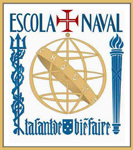 Instituto de Odivelas
14 January 2010
Instituto de Odivelas
14 January 2010
 Base Aérea nº 6
9 November 2009
Base Aérea nº 6
9 November 2009
 Marinha
3 August 2009
Marinha
3 August 2009
 Visit to the Air Force Base No. 1
19 May 2009
Visit to the Air Force Base No. 1
19 May 2009
 Naval School - Opening of the School Year
14 November 2008
Naval School - Opening of the School Year
14 November 2008
 The origins of the Naval School go back to the mythical Sagres School, created by Prince Henry the Navigator, and to the Class of the Senior Cosmographer founded in 1559 under the guidance of mathematician Pedro Nunes.
The origins of the Naval School go back to the mythical Sagres School, created by Prince Henry the Navigator, and to the Class of the Senior Cosmographer founded in 1559 under the guidance of mathematician Pedro Nunes.
The current Naval School was founded in 1782, named Royal Academy of Midshipmen, and was set up in Terreiro do Paço, in Lisbon. The mission of this academy was the training of the officers of the Royal Navy.
At the time of the Napoleonic invasion in 1807, the Royal Academy of Midshipmen was transferred to Rio de Janeiro, together with the Portuguese royal family. When Brazil became independent, in 1822, the academy was divided in two, a Portuguese and a Brazilian. The Portuguese academy was again set up in Lisbon in 1825. The Brazilian academy gave rise to the Naval School of Brazil.
In 1845, the Royal Academy of Midshipmen of Portugal was renamed Naval School. The school’s facilities continued in Terreiro do Paço, in Lisbon, until it was transferred, in 1936, to Alfeite.
The Naval School is currently a Military Higher Education Establishment, with the main mission of training its students to become Officers of the Portuguese Navy.
Subjects taught include Naval Studies, Naval Engineering – Mechanical, Weapons and Electronics branches – Naval Administration, Commandos and Naval Physicians. These courses attribute Master’s Degrees, enabling admission to the permanent Naval Staff, as Officers.
The Naval School has a complement of 70 military and civilian teachers, who associate their teaching duties with a vast professional experience.
The Student Corps is divided into 5 companies, each company representing one of the years of admission, numbering a total of approximately 270 students.
© 2006-2016 Presidency of the Portuguese Republic
 [D]
[D]